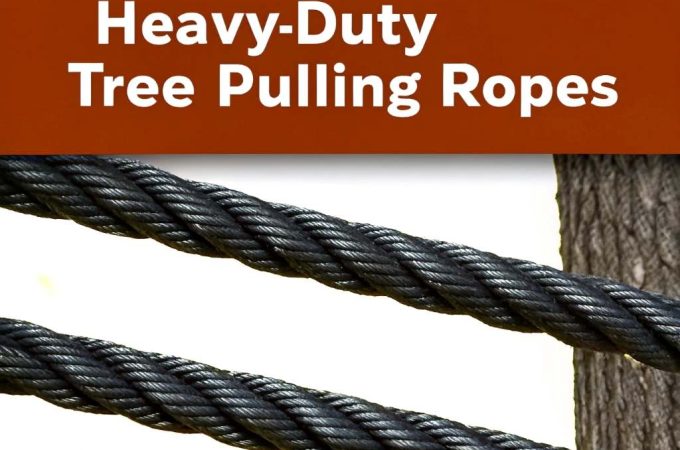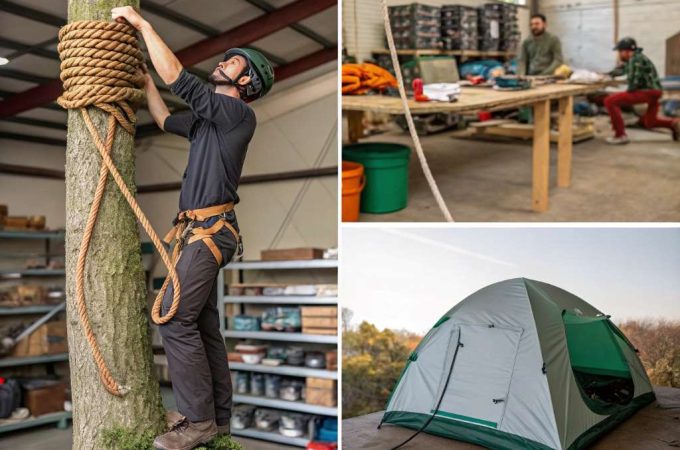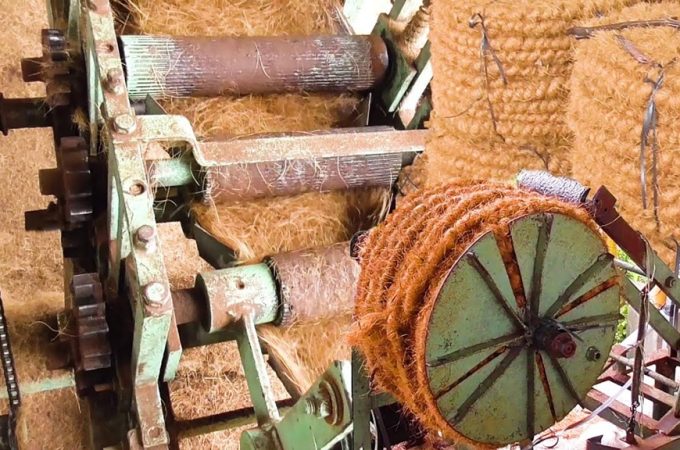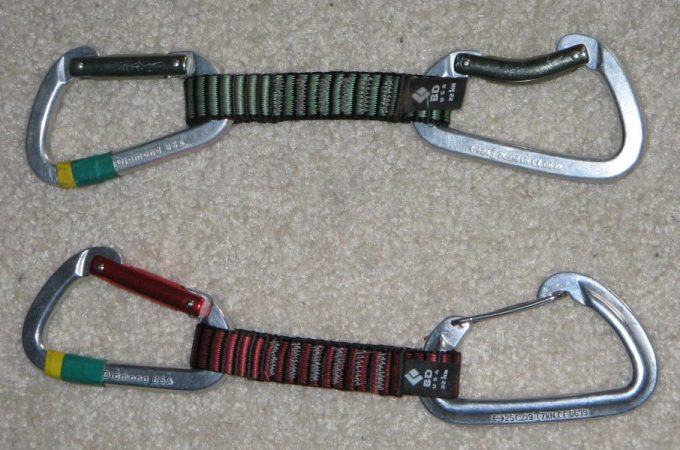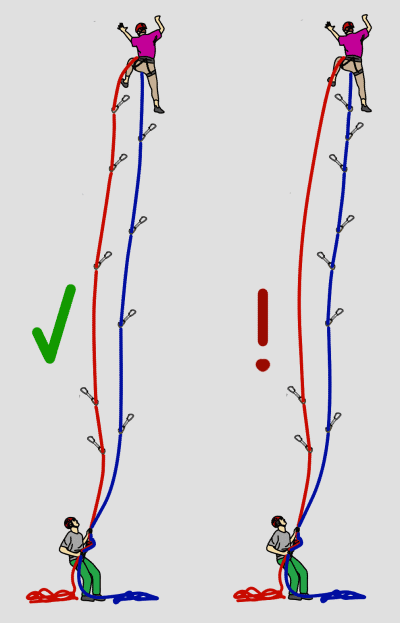
Why Do Climbers Use Two Ropes? Safety & Strategy Unveiled
Climbers use two ropes for redundancy and to reduce the risk of a single-point failure. Doubling ropes enhances safety during complex routes or when abseiling.
Contents at a Glance
ToggleClimbing is an activity that demands a high level of safety and precision. To ensure climbers are well-protected on their ascent, utilizing two ropes has become a standard practice. This strategy is particularly vital in multi-pitch or trad climbing where the potential for gear to fail or dislodge is higher.
The two-rope system allows for smoother rope management and provides a backup in the unlikely event that one rope is compromised by sharp rock edges or other hazards. It also aids in reducing rope drag and provides the flexibility to rappel full lengths, which is crucial in emergencies or when descending from a climb. By following this approach, climbers maximize their safety margin, giving them the confidence to tackle challenging routes.
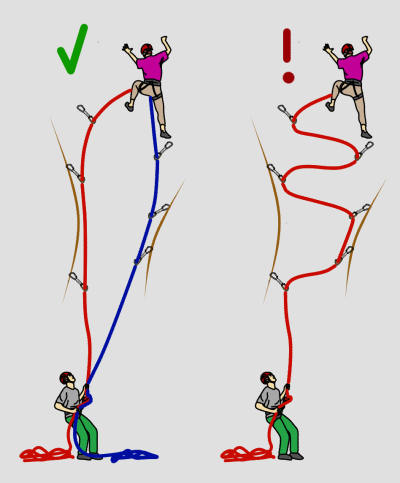
Credit: www.vdiffclimbing.com
The Essence Of Rope Systems In Climbing
Climbers face unique challenges with every ascent. Safety is paramount, and the rope system is crucial. This system provides support and prevents falls, making dual ropes a staple for climbers. Understanding why climbers use two ropes involves looking at their functions and how they have evolved over time.
Dual Rope Functions
Dual ropes offer distinct advantages. They increase safety and flexibility on challenging terrains. Below are the key functions:
- Redundancy: If one rope fails, the other serves as a backup.
- Reduced Rope Drag: Allows for smoother climbing on routes with multiple angles.
- Simultaneous Climbing: Two climbers can ascend or descend at once.
- Full-length Rappels: Enables longer, safer descents with two ropes tied together.
Evolution Of Climbing Ropes
Climbing ropes have a rich history. They have evolved from natural fibers to high-tech materials. Here’s a brief overview:
| Year | Material | Advancement |
|---|---|---|
| Early 1900s | Hemp | First climbing ropes |
| 1930s | Nylon | Increased strength and flexibility |
| 1950s | Kernmantle | Core protected by woven sheath |
| Today | Dynamic materials | Stretch to absorb fall forces |
Modern ropes are lighter, stronger, and safer. They reflect the innovation in climbing gear.
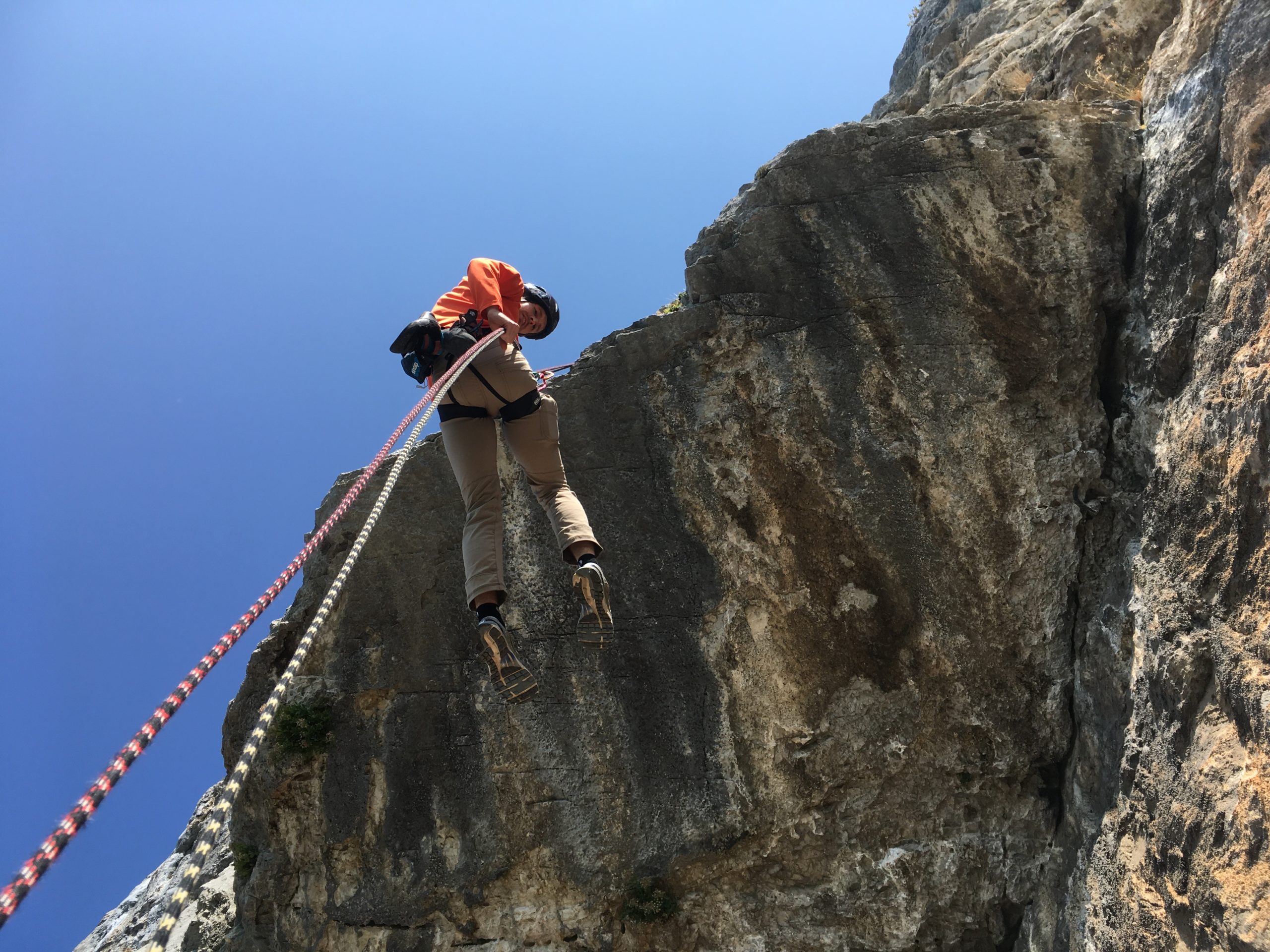
Credit: mojagear.com
Assessing The Risks: Why Safety Is Paramount
In the world of climbing, safety reigns supreme. Climbers face numerous risks as they ascend. Recognizing these dangers is crucial. Effective safety measures can mean the difference between a successful climb and a perilous situation. This is why climbers often use two ropes.
Common Hazards In Climbing
Mountains and cliffs present a variety of hazards.
- Falls can occur at any time.
- Rockfall threatens climbers from above.
- Equipment failure can turn minor issues into emergencies.
- Weather can change quickly and unpredictably.
The Role Of Ropes In Mitigating Danger
Ropes are a climber’s lifeline. They serve multiple safety functions.
| Function | Description |
|---|---|
| Arresting Falls | Provides a means to catch a climber if they slip. |
| Protection Placement | Allows secure attachment to the rock face. |
| Redundancy | Two ropes offer a backup in case one fails. |
| Route Flexibility | Enables climbers to navigate complex routes. |
Using two ropes increases safety margins. One rope can act as a backup. It can also reduce the force on anchors during a fall. Climbers wisely choose this method to ensure they manage risks effectively.
The Anatomy Of Climbing Ropes
The Anatomy of Climbing Ropes is crucial for climbers to understand. These ropes are the lifeline during climbs. They must be strong, reliable, and suitable for various climbing conditions. Different ropes serve different purposes on the rock face.
Single Vs. Half Vs. Twin Ropes
- Single Ropes: Used for most types of climbing. They are thick and strong.
- Half Ropes: Used in pairs. They offer safety on sharp rock edges.
- Twin Ropes: Also used in pairs. They are clipped together into gear.
Material And Durability Factors
Material: Climbing ropes are typically made of nylon. This material provides flexibility and strength. Nylon ropes come in two types:
- Dynamic ropes: They stretch to absorb the energy of a fall.
- Static ropes: They have minimal stretch. They are for rappelling and rescues.
Durability: Ropes have a protective sheath. The sheath guards against abrasion. The core gives the rope its strength. Both parts are essential.
Twin Ropes: The Preferred Choice For Safety
When climbing mountains, safety is top priority. Twin ropes are essential for this. They help climbers stay safe on rocky faces.
Redundancy And Fall Protection
One key reason climbers use twin ropes is redundancy. Redundancy means having a backup. If one rope fails, the other can still support the climber. This doubles the safety during a climb.
- Increased safety with two ropes.
- Backup rope ready if the main one breaks.
Load Distribution And Impact Force
Twin ropes also help share the load. This reduces the force on each rope during a fall. It makes falls safer and less jarring for the climber.
| Aspect | Benefit |
|---|---|
| Load Sharing | Less stress on each rope |
| Impact Reduction | Softer fall, less injury risk |
Using twin ropes means a smoother, safer climbing experience.
Strategic Advantages Of Using Two Ropes
Rock climbers often employ two ropes for safety and efficiency. This practice brings strategic benefits to their ascents. Understanding why climbers opt for this method reveals the importance of gear and technique in overcoming vertical challenges.
Facilitating Complex Maneuvers
Using two ropes empowers climbers with greater flexibility. It allows for smooth navigation across multi-pitch routes. Climbers can also easily avoid obstacles. This technique is vital for complex terrains.
- Simultaneous climbing for partners on different pitches.
- Alternate clipping of ropes reduces fall potential.
- Easy traverses with separate anchors for each rope.
Managing Rope Drag And Friction
Minimizing rope drag is crucial for maintaining energy and safety. Two ropes allow climbers to clip into different pieces of protection. This reduces the tension and friction on the ropes. Smooth rope travel results in less wear and better control.
| Single Rope | Two Ropes |
|---|---|
| More drag | Less drag |
| Higher friction | Reduced friction |
| Faster wear | Even wear distribution |
Practical Scenarios: When Two Ropes Are Essential
In the climbing world, safety and flexibility are paramount. Certain climbing scenarios necessitate the use of two ropes. This strategy offers redundancy, reduces rope drag, and facilitates complex maneuvers. Let’s delve into situations where a dual-rope system isn’t just beneficial, but essential.
Traverses And Multi-pitch Routes
Traverses and multi-pitch climbs often involve sharp angles and meandering paths up the rock face. A single rope can create dangerous drag, making falls harder to manage and increasing wear on the rope. Here’s where two ropes make a difference:
- Reduced Rope Drag: Two ropes allow climbers to clip into alternating pieces of protection. This setup minimizes the zig-zagging of the rope, thereby reducing drag.
- Full-Length Rappels: With two ropes, climbers can rappel the full length of the ropes, crucial for quick descents on multi-pitch routes.
- Simultaneous Climbing: When two climbers ascend different pitches, two ropes allow for independent belaying, enhancing safety.
Ice Climbing And Mixed Terrain
Ice climbing and mixed-terrain adventures add another layer of complexity. Sharp ice and rock can damage ropes. Thus, climbers use two ropes for:
- Increased Safety: If one rope is damaged by falling ice or sharp edges, the second rope serves as a backup, ensuring the climber’s safety.
- Better Anchor Management: Two ropes provide options for setting up separate anchors, which is often required in complex ice routes.
- Efficient Rope Management: Climbers can clip only one rope in riskier sections, reducing the chance of severe rope damage.
Technical Know-how: Handling And Coiling Two Ropes
Handling two ropes while climbing requires skill and organization. This guide provides essential tips for climbers on how to manage and coil ropes effectively. Keeping ropes neat prevents tangles and ensures safety during climbs.
Best Practices For Rope Management
Good rope management starts with understanding its importance. Here are key practices to follow:
- Keep ropes separate: Use rope bags or distinct coil methods to avoid mixing.
- Check regularly: Inspect ropes for wear or damage before and after climbs.
- Avoid sharp edges: Guide ropes away from rock edges that can cut or fray them.
- Use rope protectors: This helps in safeguarding against rough surfaces.
- Practice good communication: Always inform your partner about which rope you are using.
Coiling Techniques For Efficient Carrying
Coiling your ropes properly makes transport easier and extends their lifespan. Follow these steps:
- Choose your method: The butterfly or mountaineer coil works well for two ropes.
- Lay the ropes flat: Start by spreading ropes on a flat surface to avoid twists.
- Fold in half: Bring ends together and find the midpoint for an even coil.
- Coil neatly: Work from the midpoint, laying neat loops that stack on each other.
- Secure the bundle: Use rope ends or a strap to tie around the coil securely.
Proper coiling not only keeps your ropes organized but also makes them easy to transport and deploy. By mastering these techniques, climbers can ensure their safety and the longevity of their gear.
Training And Preparation For Climbing With Two Ropes
Training with two ropes is crucial for climbers. It enhances safety and efficiency on multi-pitch routes. This practice requires specific skills and preparation. Climbers must learn rope handling and safety protocols. In this section, we dive into the essential training methods for dual rope climbing.
Skill Development For Rope Handling
Mastering rope handling is vital for any climber. With two ropes, climbers can manage risks and navigate complex routes. Here are key areas of focus:
- Rope sorting: Keeping ropes tangle-free is essential.
- Simultaneous belaying: This skill allows managing two ropes at once.
- Transition efficiency: Quick and safe changeovers between pitches save time and energy.
Hands-on practice is the best way to hone these skills. Climbers often simulate scenarios on the ground before attempting them at height.
Safety Drills And Rescue Scenarios
Safety drills are a backbone of climbing preparation. Climbers practice different rescue scenarios to stay prepared. Here’s what they focus on:
- Self-rescue: Learning to ascend or descend using both ropes independently.
- Buddy rescue: Techniques for assisting a climbing partner in distress.
- Fall arrest: Mastering the use of two ropes to minimize fall distance and impact.
Training regularly on these drills builds muscle memory and confidence. It ensures climbers can react quickly and effectively in an emergency.
Gear Selection And Maintenance
Gear Selection and Maintenance are crucial in climbing for safety and performance. Climbers often use two ropes, but the choice of these ropes is not random. It involves careful consideration of their specific climbing needs. Proper maintenance of these ropes is equally important to ensure they can reliably support climbers throughout their adventures.
Choosing The Right Ropes For The Climb
Selecting the appropriate ropes involves several factors:
- Type of climb: Different climbs require specific ropes.
- Rope length and diameter: These should match the climb’s demands.
- Dry treatment: This is essential for wet or icy conditions.
- Impact force rating: Lower ratings mean softer catches.
- UIAA fall rating: A higher rating indicates greater durability.
Dual ropes offer redundancy and reduce risk.
They also allow for longer rappels and flexibility in route choices.
Routine Inspection And Care
Rope maintenance extends its lifespan and ensures safety. Follow these steps:
- Visual checks: Look for frays, cuts, or abrasions.
- Feel the rope: Check for soft spots or inconsistencies.
- Clean regularly: Use rope-specific cleaners.
- Proper storage: Keep it dry and away from chemicals.
- Record falls: Track the number and severity of falls on the rope.
Annual inspections by a professional are recommended.
Retire ropes if there are signs of significant wear or after a major fall.
Case Studies: Success Stories And Lessons Learned
Exploring the adventures of climbers reveals why two ropes can mean the difference between triumph and tragedy. Let’s dive into real-world scenarios where dual ropes played a pivotal role.
Real-life Incidents And Analysis
Throughout climbing history, numerous incidents have showcased the importance of using two ropes. Here are some notable examples:
- Rockfall Rescue: A climber survived a rockfall due to the redundancy provided by two ropes.
- Anchor Failure: When one anchor point failed, the second rope prevented a catastrophic fall.
- Rope Damage: Sharp edges can cut a rope. Climbers with a backup rope continued safely.
Improvements In Climbing Safety Protocols
These incidents have led to significant safety enhancements in the climbing community:
- Adoption of two-rope systems for multi-pitch routes.
- Increased emphasis on climber education regarding rope redundancy.
- Development of more durable and specialized ropes for various climbing conditions.
The climbing world constantly learns and adapts, ensuring that each ascent is safer than the last.

Credit: www.youtube.com
Frequently Asked Questions
Why Do People Lead Climbs With Two Ropes?
People lead climbs with two ropes for increased safety and redundancy. It also allows for easier full-length rappels and reduces rope drag on wandering routes.
What Is A Double Rope In Climbing?
A double rope in climbing involves using two thinner ropes instead of a single thicker one, providing redundancy and reducing drag on wandering routes.
Why Do You Rappel With Two Ropes?
Rappelling with two ropes increases safety and allows for longer descents. It also provides a backup in case one rope fails.
Can You Climb With 2 Single Ropes?
Yes, you can climb with two single ropes. This method, known as double roping, offers redundancy and reduces rope drag on complex routes. Always ensure both ropes are of suitable quality and length for safety.
Conclusion
Climbers often opt for two ropes for enhanced safety and flexibility. This strategy minimizes risks and aids in managing complex routes. Whether you’re a seasoned climber or a beginner, considering dual ropes could elevate your climbing experience, ensuring a safer and more efficient ascent.
Always choose the best gear for your adventure.

